
Topics
This weekend marks the 50th anniversary of Emmett Till. He was beaten and shot near Money, Mississippi after he allegedly whistled at a white female store clerk. We speak with filmmaker Keith Beauchamp who produced “The Untold Story of Emmett Louis Till” and University of Missouri-Columbia professor Clenora Hudson-Weems. [includes rush transcript]
On August 28th, 1955, fifty years ago this Sunday, Emmett Till was abducted, beaten and shot near Money, Mississippi after he allegedly whistled at a white female store clerk. The clerk’s husband, Roy Bryant, and his half-brother, J.W. Milam, were tried and acquitted by an all-white jury. The two later confessed to beating and shooting Till in a magazine article. Both men have since died.
On June 1st of this year, 50 years after Emmett Till’s mutilated body was found in a Mississippi river, federal investigators unearthed the teen’s casket in search of clues in a murder case that helped kindle the civil rights movement. Mississippi prosecutors and the FBI have said DNA or other evidence might help determine who killed the 14 year-old and whether anyone still alive should be prosecuted.
The U.S. Justice Department announced last year it would reopen an investigation into Emmett Till’s slaying. They said the move was triggered by several pieces of information including a documentary by filmmaker Keith Beauchamp.
- “The Untold Story of Emmett Louis Till”, excerpt of documentary by filmmaker Keith Beauchamp.
- Keith Beauchamp, joins us in our firehouse studio.
- Clenora Hudson-Weems, Professor of English at the University of Missouri-Columbia and author of the book “Emmett Till: The Sacrificial Lamb of the Civil Rights Movement.”
Transcript
AMY GOODMAN: Keith [Beauchamp] joins us in the studio and we’ll talk to him, as well as a professor who has been investigating this case. But we first go to an excerpt of his film, The Untold Story of Emmett Louis Till. This is Mamie Till Mobley, Emmett’s mother, describing the first time she saw Emmett’s corpse.
MAMIE TILL MOBLEY: My father was on one side of me, and Rayfield Mooty was on the other side of me, and Gene was at my back. And I shrugged them. I said, “Turn me loose. I’ve got a job to do, and I don’t have time to be fainting now.” I saw his tongue had been choked out and it was lying down on his chin. I saw that this eye was out, and it was lying about midway to cheek. I looked at this eye, and it was gone. I looked at the bridge of his nose, and it looked like someone had taken a meat chopper and chopped it. I looked at his teeth, because I took so much pride in his teeth. His teeth were the prettiest things I’d ever seen in my life, I thought. And I only saw two. Where are the rest of them? They had just been knocked out. And I was looking at his ears. His ears were like mine. They curled. They’re not attached, and they curled up the same way mine are. And I didn’t see the ear. Where’s the ear? And that’s when I discovered a hole about here, and I could see daylight on the other side. I said, now was it necessary to shoot him? If that’s a bullet hole, was that necessary? And I also discovered that they had taken an axe, and they had gone straight down across his head, and the face and the back of the head were separate.
Well, I looked at Mr. Rayner, and Mr. Rayner wanted to know, was I going to have the casket opened? I said, “Oh, yes, we’re going to open the casket.” He said, “Well, Ms. Bradley, do you want me to do something for the face? Want me to try to fix it up?” I said, “No. Let the people see what I have seen.” I said, “I want the world to see this, because there’s no way I can tell this story and give them the visual picture of what my son looked like.”
REV. AL SHARPTON: The easiest thing would have been to say, “No, close the casket. I can’t bear it.” But she somewhere found the strength to say, ’I’ll bear my pain to save some other mother from having to go through this,’ and because she put the picture of this young man’s body on the conscience of America, she might have saved thousands of young black men and young black women’s lives.
AMY GOODMAN: That was an excerpt of the film, The Untold Story of Emmett Till. That was Reverend Al Sharpton talking about Mamie Till Mobley’s decision to have an open casket. We turn now to Keith Beauchamp, the filmmaker, after this break.
[break]
AMY GOODMAN: On this 50th anniversary of the murder of Emmett Till, we turn to Keith Beauchamp, the filmmaker of The Untold Story of Emmett Till, which has just come out and will be released nationally in the coming months. On the line with us, we are joined by Clenora Hudson-Weems, Professor of English at the University of Missouri, Columbia, and author of the book, Emmett Till: The Sacrificial Lamb of the Civil Rights Movement. First, though, to Keith Beauchamp. The information you uncovered that has reopened this case, talk about it.
KEITH BEAUCHAMP: Well, through my research while trying to produce the film, I came across information that up to 14 people was involved with the kidnapping and murder of Emmett Till. Five of these people were black men. We believe that they were forced to participate because they were employees to J.W. Milam and Roy Bryant, as well as a number of their friends. Right now I believe and I have been standing by this for the whole time and which is why the investigation is open at this point is because I believe that there’s five people who can be indicted and charged for the kidnapping and murder today.
AMY GOODMAN: Clenora Weems, your response.
CLENORA HUDSON-WEEMS: As to what? Why it’s being reopened?
AMY GOODMAN: Can you talk about the significance of the case, of it being reopened and of what Keith Beauchamp has uncovered?
CLENORA HUDSON-WEEMS: Well, first of all, I don’t think Keith Beauchamp has discovered or uncovered anything. I started working on this 20 years ago. I was a Ford Fellow at the University of Iowa, and I established Till as the catalyst of the Civil Rights Movement, which a lot of my colleagues in the academy across the nation have endorsed, because of the fact that it was very difficult in 1985-86 when I went to my dissertation committee and told them that I was going to, instead of writing on black women writers, having been contracted to do the first book on Toni Morrison, I wanted to write on Emmett Till as the catalyst, and it was a very difficult thing, because it had already been established —
AMY GOODMAN: Professor Hudson-Weems, I was just wondering if you could speak louder.
CLENORA HUDSON-WEEMS: Can you hear me now?
AMY GOODMAN: That’s much better. As loud as you possibly can.
CLENORA HUDSON-WEEMS: Okay, thank you. Yes, what I was saying is that basically I can’t see very much of anything being established in the process of reopening the case as such, because I think that my 1988 Ford doctorate dissertation which was entitled “Emmett Till: The Impetus of the Modern Civil Rights Movement,” which later became my book, which I had published this 1994 — that was exactly my book — that, in fact, all of the facts that I had put in that book of showing that Emmett Till’s lynching, which occurred three days and three months prior to Rosa Parks, was in fact the catalyst, and I have spoken in and out of this country on that for the last 20 years. I had talked about one particular black guy who was there in the first chapter of my book, and that was “Too Tight” Collins, who was forced to identify Emmett Till.
As I said before, the whole issue of black men being a part of this lynching, to me, is the most abominable, incomprehensible thing I’ve ever heard of. It’s like blaming the victim. And I have never — and I have talked to colleagues since then. Everybody is emailing me and writing me and calling me: “Why is it said that black men were a part?” And this last black man, Mr. Loggins, and I’ve talked to people on Mr. Loggins and found out that, in fact, Mr. Loggins and others were forced to clean up the mess after it was done, but I have never in my life known — and I’ve talked to even my producer who has been working with me since 1988 — '99, I'm sorry, and that is Barry Morrow, who won the Oscar for Rain Man. He and I talked about it, and everybody talks about the absurdity of the notion of black men being a part of this, because I can’t understand, first of all, what benefit would it give to a black man to help lynching. Moreover, never in the history have I ever known white men to invite black men to engage in the private lynching of blacks, and particularly a black male whom they say has in some way infringed upon the sanctity of white womanhood.
AMY GOODMAN: Professor Clenora Hudson-Weems, Professor of English at University of Missouri, Columbia, I want to get response from Keith Beauchamp, the filmmaker.
KEITH BEAUCHAMP: Well, I would have to go back and talk about my research for a second. You had people who came before me who was the first to come out that black men was involved with the kidnapping and murder of Emmett Till. You had Dr. TRM Howard, Medgar Evers, Ruby Hurley, Amsey Moore. You had NAACP officials — many other NAACP officials, as well as the black press. James Hicks of the Baltimore Afro-American newspaper, Moses Newsome, Simeon Booker, who is still alive today, who worked for Jet magazine. If Dr. Weems would have done her research, she would have saw that these names have come up before. This is no different from what they have said in the past. I just was able to go back, study the works of these great people and come up with the investigation — to help with the investigation today. So, these things were already out there.
So, I mean, with the criticism and everything else, I mean, this is a minute portion of why the 50th anniversary is really important. We have a 50-year-old murder case reopened now, right now. We should not be sitting up here debating about the information, because no one knows what I gave the F.B.I. or the federal government. I mean, they can help come out and talk and think of some of the things that I have given. But, however, no one knows until the investigation is over with. I think everything is going to be laid to rest at that time. But it is very important for us to continue to keep our eyes on the prize, to make sure that justice prevails in this case. I worked with Mrs. Mobley for eight years until her passing, fighting to see justice done in her son’s case. I don’t need to be sitting on a television station or debating with any kind of scholar, because it was so hard to get this case re-opened in the first place. So many people have tried to do this —
AMY GOODMAN: What broke it? How did you get it re-opened?
CLENORA HUDSON-WEEMS: Let me say just one thing. I want to interject. Mr. Beauchamp is talking about, he talked with Mamie the last eight years. I met Mamie January 6, 1988, exactly 2 1/2 weeks after I turned in the first eight chapters, which was basically my dissertation. I forced my committee to let me go and interview her, and they didn’t have to read it, because I was going to be marching the following year. I said, “But at least let me have the mother to have the last word.” So he talked with Mamie. I started talking with Mamie, and I have letters that I can read from Mamie going back to — the first letter I got from Mamie was April 23, 1988, when she asked me, and she says that she had been just enjoying working and listening to me read from my dissertation — because it was already turned in in December before I met her — and I remember she said, “Why, Clenora, you seem to have done all the research on Emmett. Why did it take you so long for me?” I said, “Because, Mamie, you are the icing for the cake.” I said that. That is in the book and the dissertation in the interview.
And she said that — she asked me, she said, “I feel that you have the background and the sensitivity to help me with my own story of Emmett Till as I saw him and how my life has been directed as a result. And so, Clenora, I’m asking you, if you just set down time to help me write this book — I feel that time is of essence, because so much time has already passed, and if you just say the word I will set up an appointment, a meeting with my attorney and see how fast you or we can get the ball rolling.” That is reading directly from that. Unfortunately because I had a contract to finish with my Morrison book, and as a professor I had another single author book and I co-authored the Morrison book with Samuels at the University of Utah, I had to move on and do a single-author book in the English department, and I finished Emmett after Africana Womanism, and I think it must have been ten months later, another ten months later, I decided let me just go on — we decided, rather, to publish the dissertation. But at any rate, this whole notion of “if I had done my research” — I was a national Ford Fellow. How dare you question my research as “if” I had done it?
AMY GOODMAN: Let’s get a response from Keith Beauchamp.
CLENORA HUDSON-WEEMS: I marched with a Ph.D. from the University of Iowa.
AMY GOODMAN: Professor Weems, let’s let Keith Beauchamp respond.
CLENORA HUDSON-WEEMS: I did my research. I have 300 —- almost 400 pages of research. You can get it through the inter-library loans. You don’t have to get the dissertation -—
AMY GOODMAN: Let’s let Keith Beauchamp respond.
CLENORA HUDSON-WEEMS: Okay.
KEITH BEAUCHAMP: Okay. The issue at hand is not about who did much research. If you did this much research you should have went to the federal government and gotten this case reopened. I don’t want to debate here.
CLENORA HUDSON-WEEMS: Don’t tell me where to go.
KEITH BEAUCHAMP: Once again, it is very important to understand that these type of acts are still going on in this country today, and it is so important that young people, my peers, get involved with the movement that still exists. Just like this case was a catalyst for change back in 1955, we continue to believe that it will be a catalyst for change today. The message at hand is the 50th anniversary to Emmett Till’s murder, what are we going to do? This case serve as a reminder of how far we have come and how far we have yet to go. This thing is bigger than me, as well as Dr. Weems. So we must continue, once again, to keep our eyes on the prize until justice prevails in this case.
AMY GOODMAN: How many people do you think will be — have you interviewed — would you believe might be indicted out of this who are still alive?
KEITH BEAUCHAMP: Well, I don’t want to say who will be or who will be indicted at this point because the investigation is still going on. I have been working with the F.B.I. ever since the case reopened last year on May 10, working very closely with a special agent. There’s a lot of things that the public don’t know what I have discovered. And in due time this information will come out and then I will love to hear the critics at that point come out and say what they have to say. But once again, the most important thing is to understand that we have an agenda here. We have a real agenda here. Something is wrong when I — you know, I’m good friends with Ben Chaney, the brother of James Chaney. Something is wrong when we have this case reopened, the three civil rights workers case reopened, and now you have Killen out on bond?
AMY GOODMAN: The man who was just convicted.
KEITH BEAUCHAMP: Just convicted, and now he is out on bond for $600,000, which most of that money was raised by the Klan. And now, they are about to honor him on September 18 in front of the courthouse, on the courthouse lawn. I mean, something is wrong, you know. That’s why this case is so important today. I mean, this case is so important for us today because we must never forget those who paved the way for us to exist in this free society, and I’m a firm believer if we forget our past, history will repeat itself. And that’s what’s happening now.
AMY GOODMAN: Professor Hudson-Weems.
CLENORA HUDSON-WEEMS: And by the way, let me just say this. Just to read Mamie’s endorsement of my book quickly before I make my statement. She said that “Clenora Hudson-Weems has dug relentlessly into southern justice, revealing the stench and ugliness of American race hatred, American style. She has captured the essence of Emmett.”
AMY GOODMAN: Why do you call Emmett Till the sacrificial lamb of the Civil Rights Movement?
CLENORA HUDSON-WEEMS: I talked about that in the very opening, the introduction of my book. Many people have called him the sacrificial lamb because he was this child that had actually died a brutal death. I went on to say basically at the show that it was so ugly and it was because he was so ugly he became the true symbol of the true ugliness of American racism staring us in the eyes. That has been quoted all over the nation in papers. This whole thing of Emmett Till is something that I resurrected in 1985. Mamie has never stopped. She is the mother, and she has talked about Emmett Till incessantly.
But until Emmett Till was brought into the halls of academia, people simply just dismissed it. In fact, everywhere I went — and I spoke all over the country — they would say, “Emmett Till is not the impetus, as you say, or the catalyst. You know, it was Rosa Parks. And what does that say about Rosa Parks?” I said, “It doesn’t take away from Rosa Parks. It simply establishes the fact that this thing happened three months and three days prior to,” which in my estimation if I look at all of the different types of unrest that followed that, and you read all of the testimonies, I have eons of people in this book, and in the back I had to actually put it in an appendix, of testimonies from people from all over the country, of all walks of life. I said, if you look at that you have to say that it was the impetus for the civil rights movement.
AMY GOODMAN: On that note, we are going to leave it there, because we want to end with a song that has been rarely heard but first played on Pacifica station WBAI. Thanking Professor Clenora Hudson-Weems and Keith Beauchamp, the song of legendary folk musician Bob Dylan.

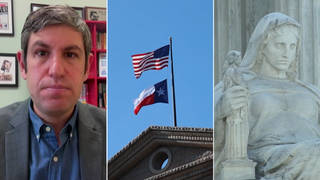
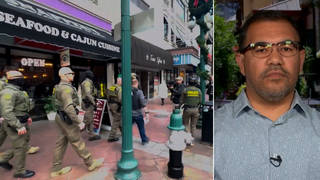
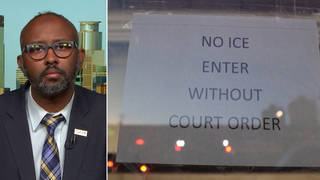
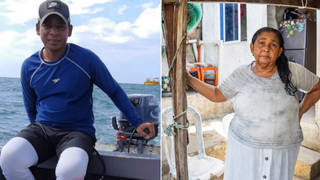





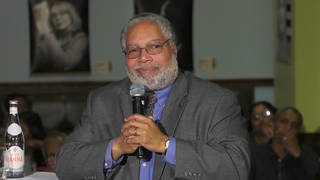
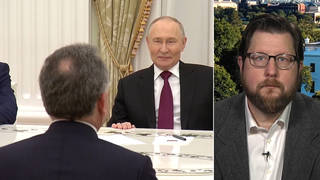
Media Options